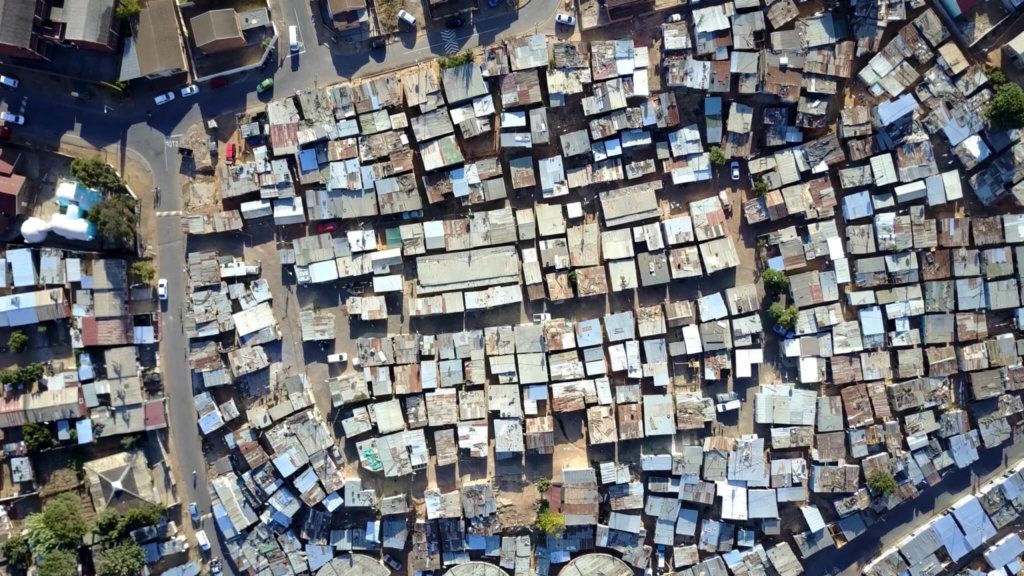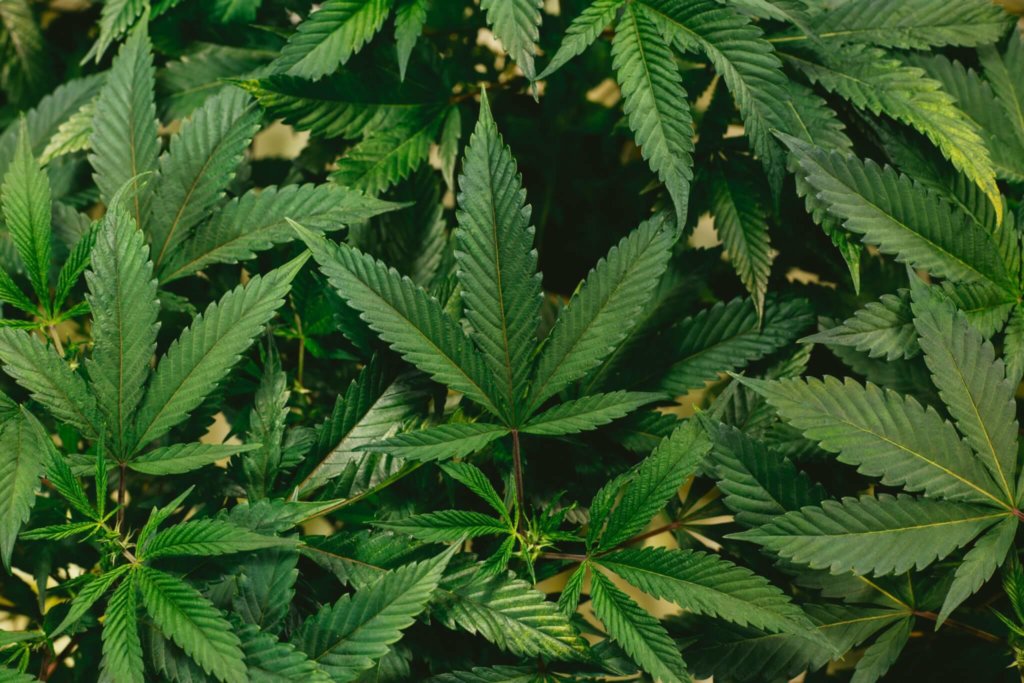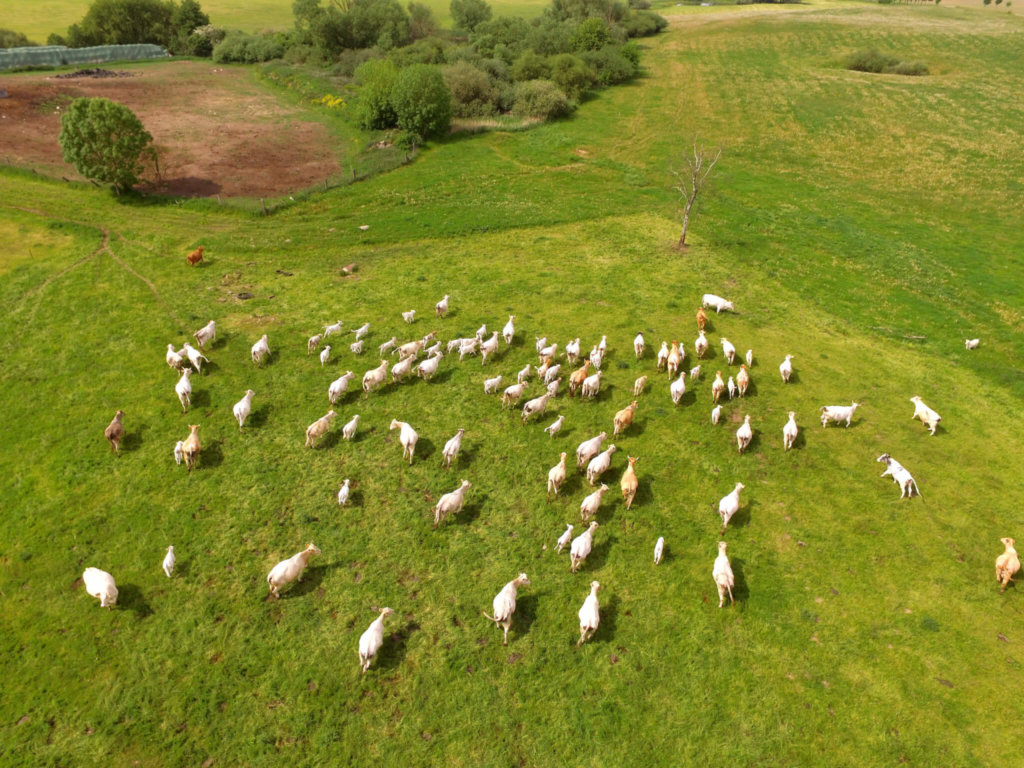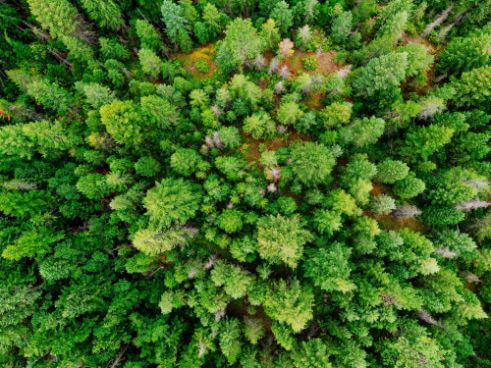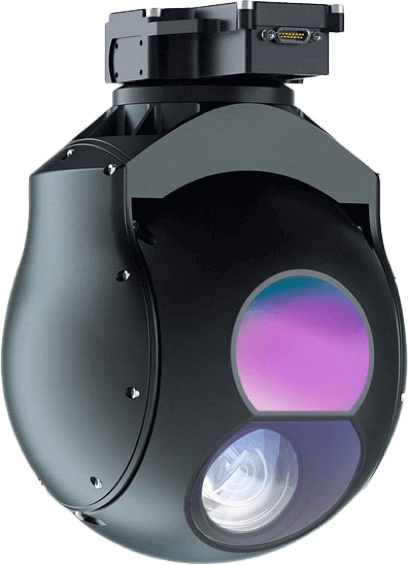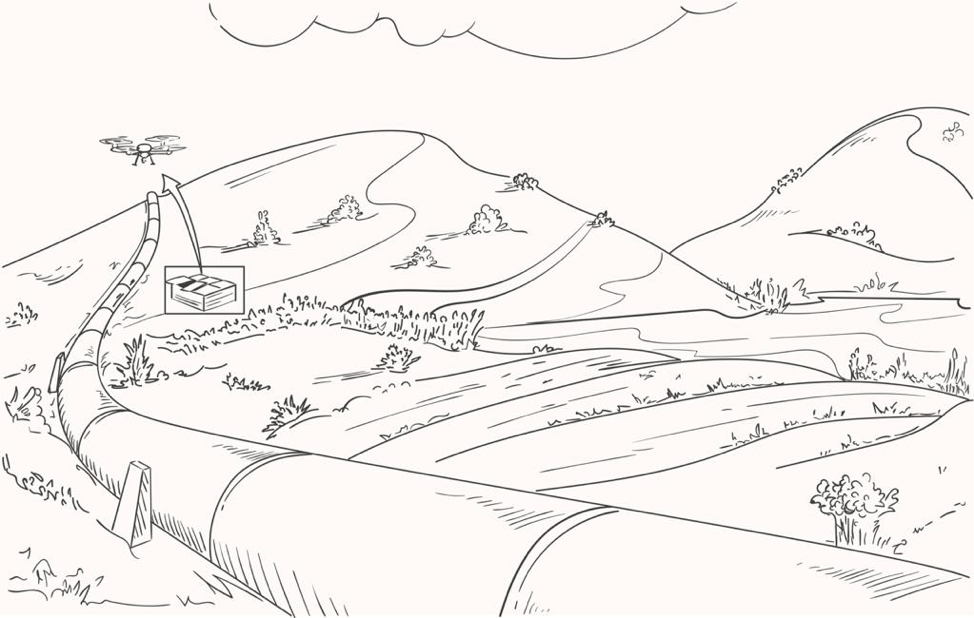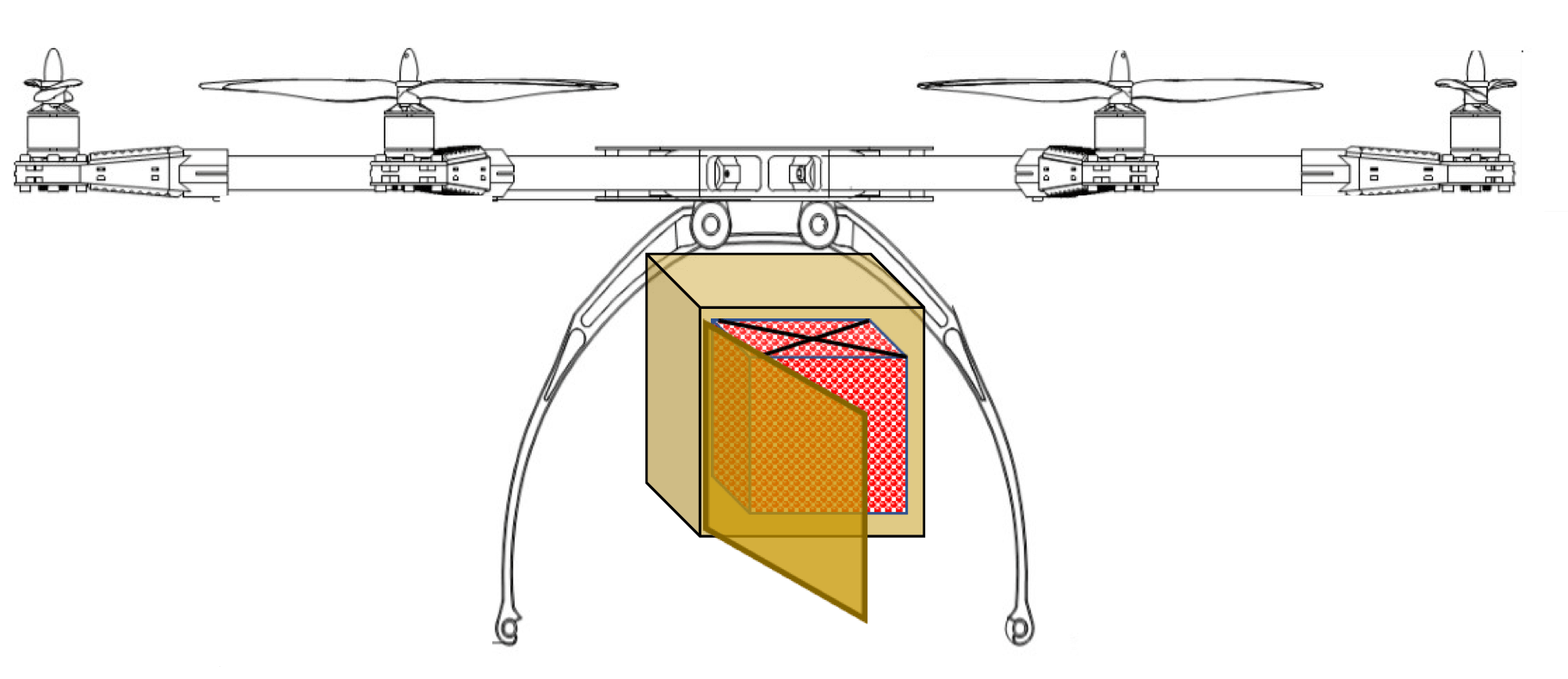Drones in India, like drones in Africa, are expected to solve many of India’s critical problems by leapfrogging existing technological constraints.
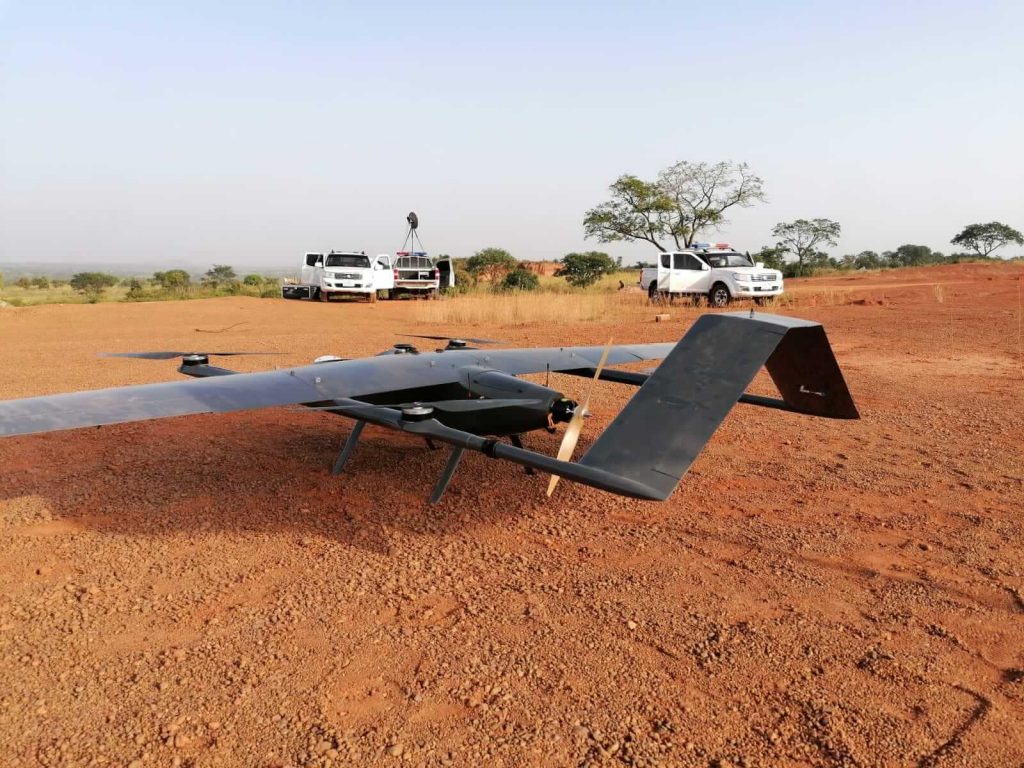
Regulations for drones vary by country (Source: Statista)
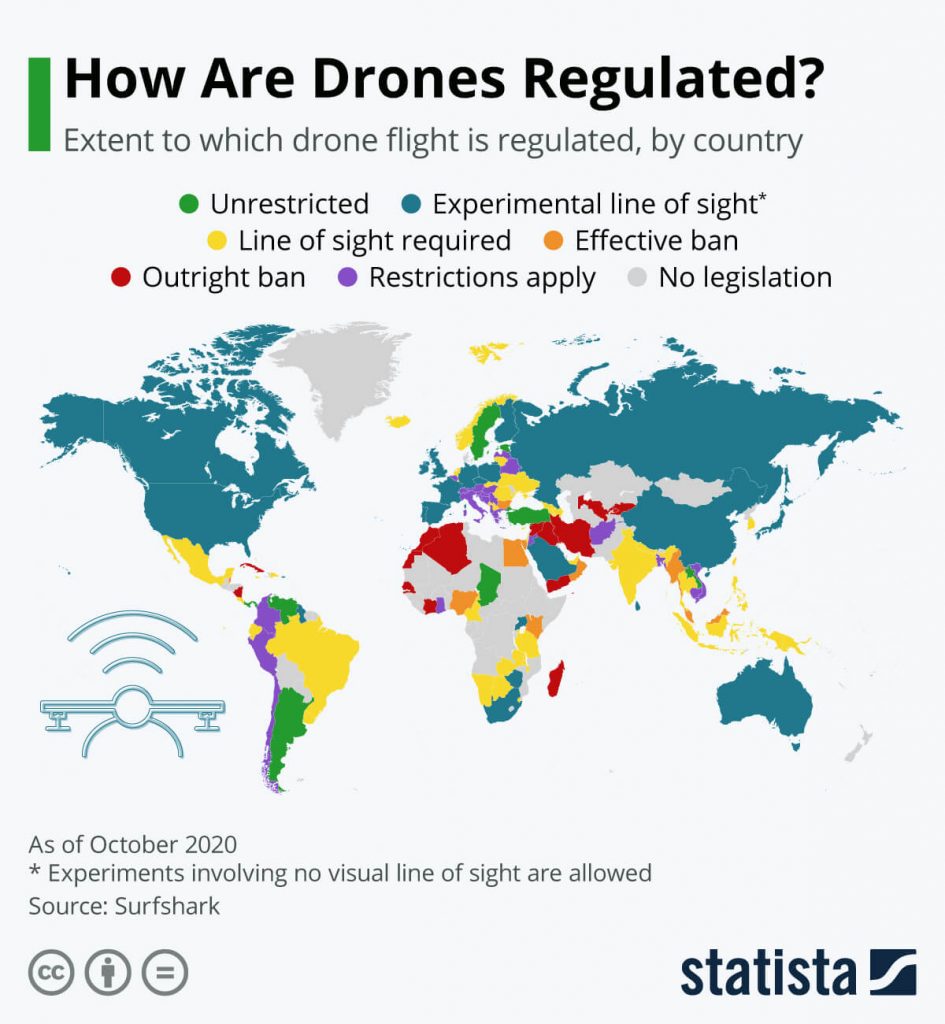
In India drones are taking off at a massive scale.
Rapid population growth has made India the world’s most populous democratic country. While India is becoming a hub for medical tourism, not all these facilities are available to local residents. They mostly happen to be poor and of whom 80% live in villages.
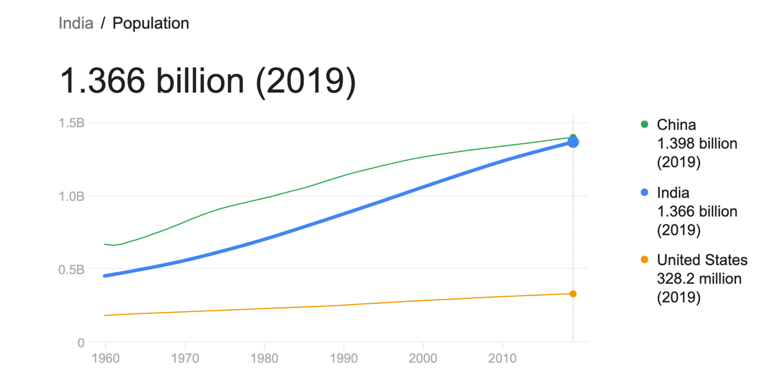
Healthcare is a neglected issue in India, as major attention drawers are agriculture, infrastructure and IT.
Pollution
Pollution and environmental issues are the other challenges that India is facing at present. This includes degradation of land, depleting natural resources, and loss of biodiversity which are the main issues of concern due to pollution.
Infrastructure
India needs to work swiftly on its infrastructure development. Towards better roads, affordable housing and services like water, sanitation, primary healthcare, etc.
Despite lockdown measures, the India is increasingly flying drones:
- Law enforcement agencies manage crowds during the Covid-19 induced lockdowns. Additionally, they help fight off locust swarms in the middle of the desert.
- like mapping or spraying pesticides.
- for surveillance to curtail the alarming spread of Covid-19, for sanitisation and vaccine and medicine delivery.
- Capital city region: (i.e. Amaravati Andhra Pradesh)
- to monitor the development activities of the, through drone-based outputs.
- Karnataka
- for property tax estimation and
- creation of base map of a city/town for detailed planning and sustainable governance.
- Chandigarh
- to get an aerial view of all properties in Chandigarh.
Rules
The Ministry of Civil Aviation issued the latest UAS Rules, 2021, which came into effect on March 15, 2021. The UAS rules are applicable to every person owning, possessing, exporting, importing, manufacturing or trading a UAS in India.
The rules categorise drones into:
| Type | aeroplane, | rotorcraft | hybrid | |
| Control | remotely piloted | model remotely piloted | autonomous unmanned | |
| Size | Nano (250g) | Micro | Small | Medium Large |
To fly a drone (other than that in the Nano category) it is necessary to obtain a permit from the Director-General (DG) of Civil Aviation. Rules for each category vary. Nano, Micro and Small drones are not permitted to operate beyond a height of 15m, 60m and 120m, respectively. Additionally, these drones can fly within the visual line of sight and are prohibited from delivery of goods.
Prior approval from the DG will be required for individuals and companies to import, manufacture, trade, own or operate drones.
Likewise, no drone can be operated without a certificate of manufacture and airworthiness. All drones including those in the Nano category, are required to be equipped with a:
- global navigation satellite system,
- geofencing capability and
- flight controller,
- amongst others.
Drone ports
Paving the way for setting up drone ports, the rules intend to provide an airport-like setup for arrival, departure and maintenance of drones.
What is Digital Sky?
The Digital Sky platform was launched to start registration of drones, pilots, and operators for online permission without which an RPAS does not take-off without signed digital permission.
Do I need a license to fly drones in India?
How do I register my drone with Digital Sky?
- ALL unmanned aircraft need to be enlisted.
- The drone enlistment form has two parts.
- Uploading drone owner’s information and receive an Ownership Acknowledgement Number (OAN).
- Using the OAN, the owner will upload the drone-related information and will receive a Drone Acknowledgement Number (DAN).
- Each drone will require a fresh enlistment. A drone owner shall use same OAN to enlist all drones owned by him. A separate DAN will be issued for each drone.
- Possession of an OAN or DAN does NOT confer the right to operate the drone in India.
- Required documents before filling the enlistment form:
- Scanned copy of Passport’s first and last page (in one sheet). OR Aadhaar card’s front and back view (in one sheet).
- Three high quality pictures of your drone: front-view, top-view; and a close-up view of the manufacturer’s serial number. Each picture should have a physical measuring-scale placed adjacent to the drone in order to provide a reasonable approximation of its dimensions.
- Copy of any utility bill (Electricity, water, gas, fixed line telephone or mobile phone). Alternatively use a bank statement not older than 3 months.
- In case you use the bank statement, you may black out the financial details on the bank statement.
- Copy of the highest educational qualification (required ONLY for individual owners).
- PAN card of organisation (NOT required for individual owners).
- Letter on official letterhead certifying appointment of Authorised Signatory (NOT required for individual owners).
- Documents should not be password-protected. Each document or photograph should be below 300KB in size.
- You have to complete the form in one go.
Green Zones to fly drones in India
The Ministry of Civil Aviation has grants permits to “No-Permission-No-Takeoff’ (NPNT) compliant drone operations at a number GREEN ZONES only. The approved sites allow drone usage up to 400 ft Above Ground Level (AGL).
List of Green Zones
| State | Number of sites |
| Andhra Pradesh | 04 |
| Chhattisgarh | 17 |
| Gujarat | 02 |
| Jharkhand | 30 |
| Karnataka | 06 |
| Madhya Pradesh | 24 |
| Maharashtra | 22 |
| Odisha | 30 |
| Punjab | 01 |
| Rajasthan | 06 |
| Tamil Nadu | 07 |
| Telangana | 09 |
| Uttar Pradesh | 08 |
What is NPNT?
NPNT is a software program. It enables every Remotely Piloted Aircraft (except Nano) to obtain a valid permission through DigitalSky platform before operating in India.
Remotely Piloted Aircraft (RPA) is defined as an Unmanned Aircraft (UA), which is piloted from a remote pilot station. Drone is a layman terminology for UA.
DigitalSky is a Ministry of Civil Aviation initiative, a highly secure and scalable platform. This supports technology frameworks such as NPNT. Which is designed for enabling flight permission digitally and managing Unmanned Aircraft operations and traffic efficiently.
If a NPNT compliant drone tries to breach geo-fencing (to go beyond the permissible boundary in the airspace). It will result in the in-built software to compel the drone to return-to-home (RTH).
Drone flights in the green zone sites shall be compliant with the applicable conditions of Unmanned Aircraft System (UAS) Rules, 2021.
Flying in the ‘green-zones’ require only intimation of the time and location of the flights.
Permissions are required for flying in ‘yellow zones’ and flights are not allowed in the ‘red zones’.
Unmanned Aircraft System (UAS) Rules, 2021:
- UAS are categorised as airplane, rotorcraft and hybrid. This includes remotely piloted aircraft, model remotely piloted aircraft and autonomous unmanned aircraft systems.
- UA is classified as nano, micro, small, medium and large unmanned aircraft based on the maximum all up weight.
- Mandatory for individuals and companies to obtain approval from the Directorate General of Civil Aviation (DGCA).To import, manufacture, trade, own or operate drones.
- No Permission- No Take-off (NPNT) policy adopted for all UAS except for those in the nano category.
- Micro and small UAS are not permitted from flying above 60m and 120m, respectively.
- UAS prohibited from flying in strategic and sensitive locations. Including near airports, defence airports, border areas, military installations/facilities. This includes areas earmarked as strategic locations/vital installations by the Ministry of Home Affairs.
- Research and development (R&D) organisations, including start-ups, authorised UAS manufacturers. As well as any accredited recognised institution of higher education located in India, are permitted to carry out R&D of UAS only after obtaining authorisation from the DGCA.
- Penalties ranging between rupees ten thousand and one lakh for individuals. For organisations, a 200, 300 and 400% of the amount specified for individuals, based on the size of the organisation.
Deploying Drones in India
The nature and size of the Indian socioeconomic challenges make it an ideal setting for a wide variety of long range drone use cases:
Infrastructure development
The infrastructure development backlog requires innovative approached to overcome constraints. Read more about drones for Inspection and Detection, Construction. Also read about the latest advances of automating Inspection Drones with AI.

Border Security
Indian has long, very remote and sometimes porous borders with a variety of neighbours. Which require persistent surveillance. Read more about Border Security with Drones.
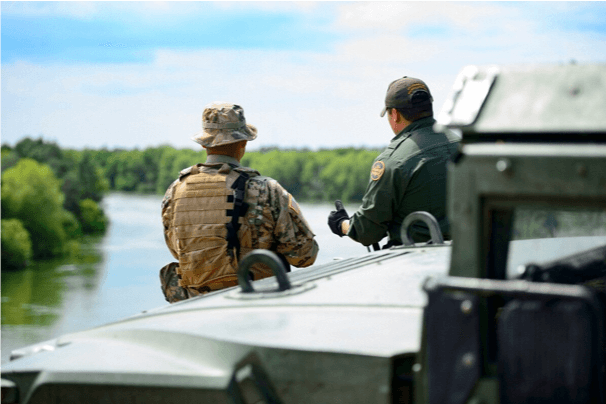
Remote sites
Drones are very effective in overcoming lack of infrastructure for delivering to remote, inaccessible sites. Read more about delivery here.
Agriculture
Drones can play a role in Precision Agriculture, Cattle Rustling and Crop Spraying.

Healthcare
The Covid Pandemic has highlighted the role of drone in a very persuasive way. Read more here.
Airborne Drones is a specialist manufacturer of long range drones:


